| Travel, Science, Mountains and Oceans | ||||||||||||||||
 |
||||||||||||||||
Nekton: swimmers
Taxonomic Classification of Nekton
1. Phylum Mollusca
a. Cephalopoda 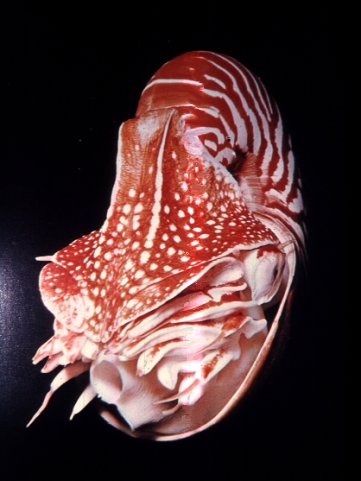
· squid
2. Phylum Chordata, Subphylum Vertebrata
a. Agnatha - jawless fishes
·
lampreys
and hagfish 
b. Chondrichthyes-
jawed fishes with skeleton composed of cartilage 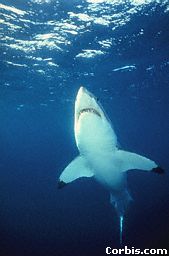
· sharks
· skates and rays
c. Osteichthyes - jawed fishes with a bony skeleton
· common fishes, such as salmon, herring, and halibut
d. Reptilia
· sea snakes
· sea turtles
e. Aves (birds)
· Penguins
· Seabirds capable of flight, such as murres, kittiwakes, puffins, etc. (Although some of these spend little time in the water, they are part of the marine food web.)
f. Mammalia
· seals, sea lions, walrus
· whales
· sea otter
· polar bears
· manatees and dugongs
Of the taxonomic groups listed above, the most important globally are the bony and cartilagenous fishes and the squids. Other groups can be locally important predators, e.g., birds and mammals in the Arctic and Antarctic.
Nearly all nekton are carnivores (= meat eaters) and predators (organisms that kill and eat other animals). This lifestyle requires the rapid swimming that is characteristic of nekton. Adaptations related to swimming include:
- means of propulsion (fins, flippers, etc.)
streamlined shape. Nekton also generally have relatively (compared to most animals) highly developed nervous systems,
- with acute senses of sight, hearing, and/or smell, and are capable of complex behaviours.
However, a few nekton are filter feeders and scavengers are fairly common. Often predators will eat dead animals if available.
2. Fish 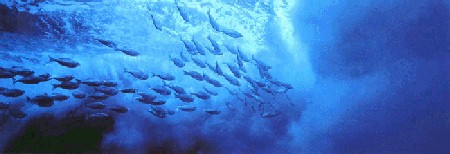
Cartilagenous Fish
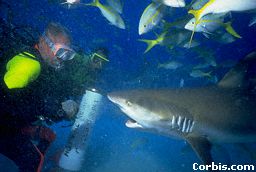 Sharks: Most are
predators. They have many abilities related to finding and capturing prey:
Sharks: Most are
predators. They have many abilities related to finding and capturing prey:
- strong, fast swimmers
- sharp, numerous, continuously replaced teeth
- very acute senses:
- eyesight
- hearing
- smell / taste, chemical sense
- mechanical sense
- electroreception
A few sharks (whale shark, basking shark) filter feed on zooplankton.
 Rays and
skates: most are
predators also. They have many of the same sensory abilities as sharks, but are generally
rather slow swimmers. They often feed on slow-moving or sessile (immobile) benthos. Manta
rays are filter feeders on zooplankton.
Rays and
skates: most are
predators also. They have many of the same sensory abilities as sharks, but are generally
rather slow swimmers. They often feed on slow-moving or sessile (immobile) benthos. Manta
rays are filter feeders on zooplankton.
Bony fish
Pelagic fish: live in the water column. They are often streamlined, swift swimmers, predators and carnivores.
examples: salmon, tuna, swordfish
Herring prey largely on zooplankton, as do many other small fishes. Anchovies are filter feeders on phytoplankton or zooplankton. There is a productive anchovy fishery in Peru upwelling region.
Demersal fish: Live on or near the bottom. Some have a flattened shape. They tend to be slower swimmers, since their prey is often slow or sessile.
examples: halibut, sole, cod, adult pollock.
Deep-sea fish: Predators, (scavengers opportunistically), carnivores. Deep-sea fish have adaptations to an environment where food is scarce.
- Light organs: Attract prey and mates
- Large eyes: (in mesopelagic only to see light given off by other organisms as well as residual sunlight
- Large, sharp teeth
- Large mouth, dislocatable jaw, stretchy body and gut, can eat prey larger than themselves
Small, thin body, low food needs
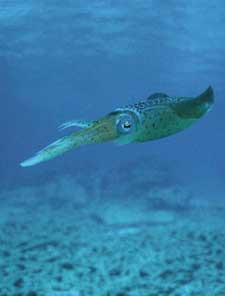 3. Squids
3. Squids
Squid are abundant in the ocean but hard to catch, and so population estimates are uncertain.
- Especially common in mesoplagic (200-1000 m depth)
- Swim by jet propulsion.
- Use tentacles to capture prey.
- All are carnivorous predators.
Have large eyes and highly developed nervous systems.
4. Reptiles 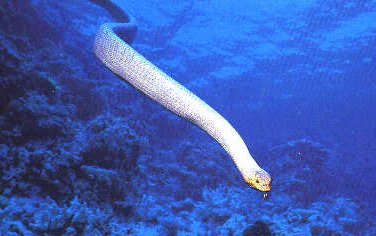
Sea snakes
- all are poisonous
- predators, carnivores
- live only in Pacific & Indian Oceans
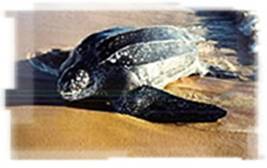 Sea
turtles -many
endangered species
Sea
turtles -many
endangered species
- Green- eats algae (herbivore)
- Hawksbill- eats sponges
- Loggerhead- eats sponges, crabs, mollusks
- Leatherback- eats jellyfish (endangered by plastic bags)
Other dangers:
- Fishing (drown in nets)
- Egg laying sites destroyed
Hunting, especially while laying eggs, or egg gathering.
5.
Marine Mammals 
1. Cetaceans: whales
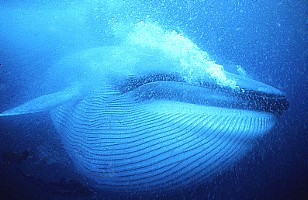 All are
nekton and carnivorous.
All are
nekton and carnivorous.
- Baleen whales feed on zooplankton (except the grey whale eats benthos). They are filter feeders, using their baleen to strain the plankton out of the water.
- Toothed whales usually feed on fish and squid. They are predators.
2. Pinnipeds: seals, sea lions and walrus
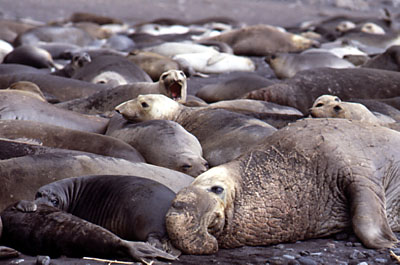 All are
nekton, carnivores, and predators except the manatee and dugong, which are
herbivores.
All are
nekton, carnivores, and predators except the manatee and dugong, which are
herbivores.
- Seals and sea lions usually eat fish or squid; some also eat large zooplankton such as krill or shrimp.
- Walrus eat benthic invertebrates such as clams. The tusks are not essential for feeding; rather, they are mainly for fighting with other walruses.
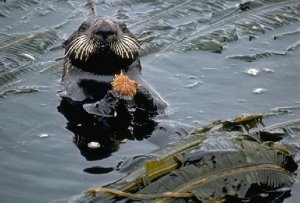 Mustelids
Mustelids
- Sea Otters are nekton, predators, and carnivores that feed on benthos.
Ursidae
- Polar Bears are predators and carnivores that eat seals. They are classified as marine mammals because they spend much of their lives on sea ice, and because they are part of the marine food web in the Arctic.
Seal Classification
Order Carnivora
Suborder Pinnipedia = “Feather feet”
Families:
Otariidae = eared seals
Phocidae = earless seals
Odobenidae = walrus
Pinniped characteristics:
- Pinnipeds are amphibious; they eat at sea, but must mate, give birth, and rear young on shore.
- Their sense organs function well either in or out of the water.
- They have 4 webbed flippers, a streamlined shape, and fur, but they are mainly insulated by blubber
- Many are capable of very deep dives, up to 4500 feet deep and 2 hours duration. To accomplish this they have special adaptations, including:
- High blood volume.
- Special blood chemistry to retain oxygen (a special haemoglobin)
- Tolerance to high levels of carbon dioxide and lactic acid in muscle and blood.
- Lungs and ribs are collapsible, to avoid damage at high pressure.
Earless Seals
- No external ears
- Short necks
- Short front flipper
- Hind flippers that do not fold under the body
- Poor agility on land
- Not usually sexually dimorphic (except elephant seal). That is, the male and female are about the same size.
- Young have only a brief dependence; may nurse for only one month.
Eared seals
- Visible but small ears
- Long necks
- Long front flippers
- Can pull hind flippers up under their bodies
- Fairly agile on land
- Sexually dimorphic; males are larger than females, and defend a “harem” of females during the mating season.
- Longer dependence of young; usually at least several months.
Walrus
- No visible ears
- Can use hind flippers to assist movement on land
- Very elongated canine teeth (tusks) in both sexes.
Earless seals include the elephant seal, ribbon seal, spotted seal, harbour seal, ringed seal, and bearded seal.
Eared seals include the California sea lion, the Northern fur seal, and the Steller sea lion.
Walrus are divided into Pacific and Atlantic walrus, but these two groups are very similar.
Sign Guestbook View Guestbook
|
